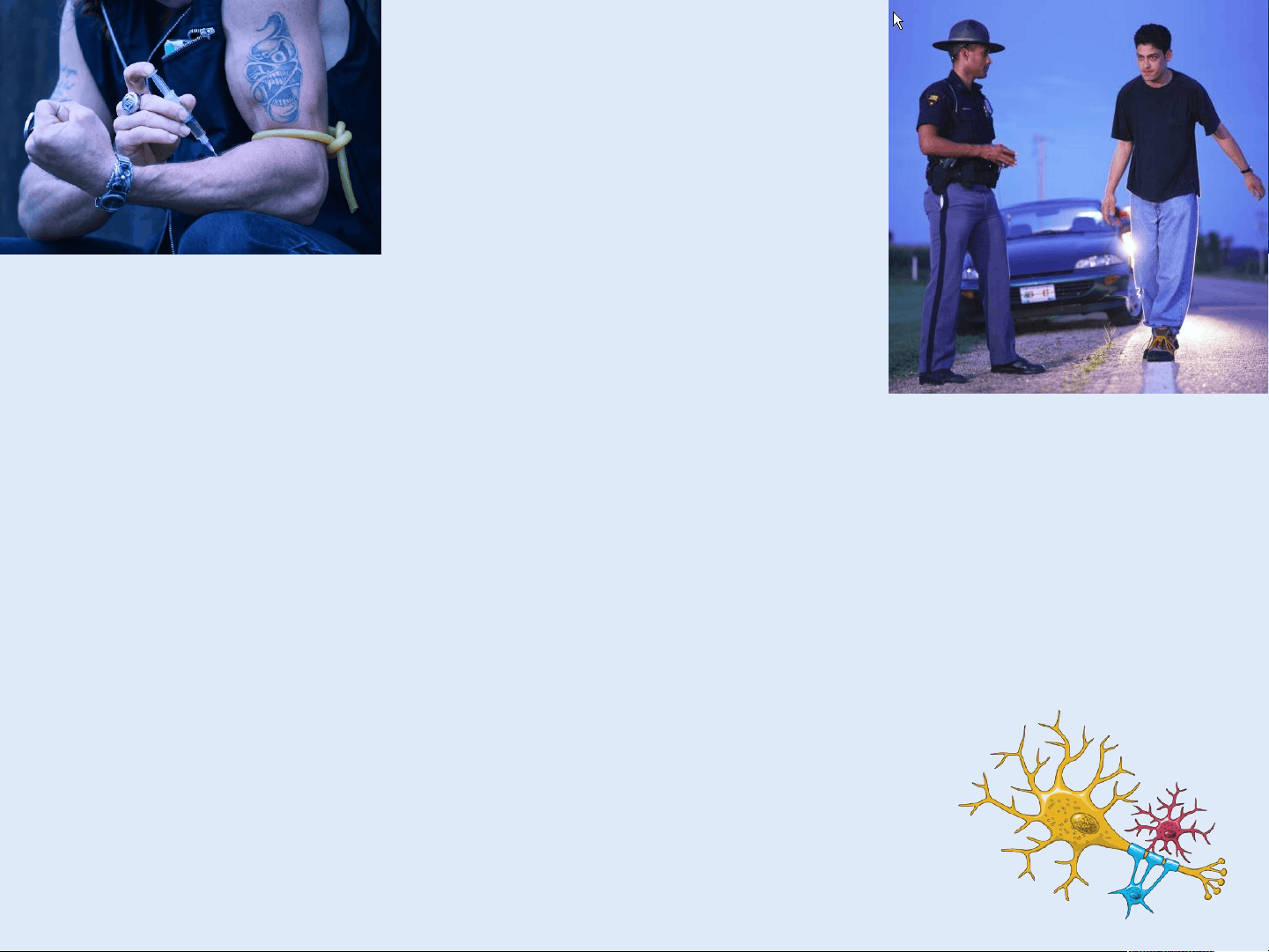
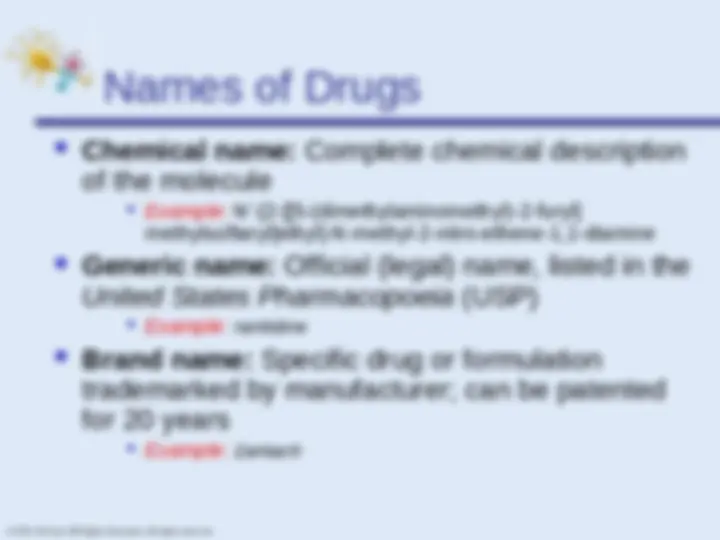
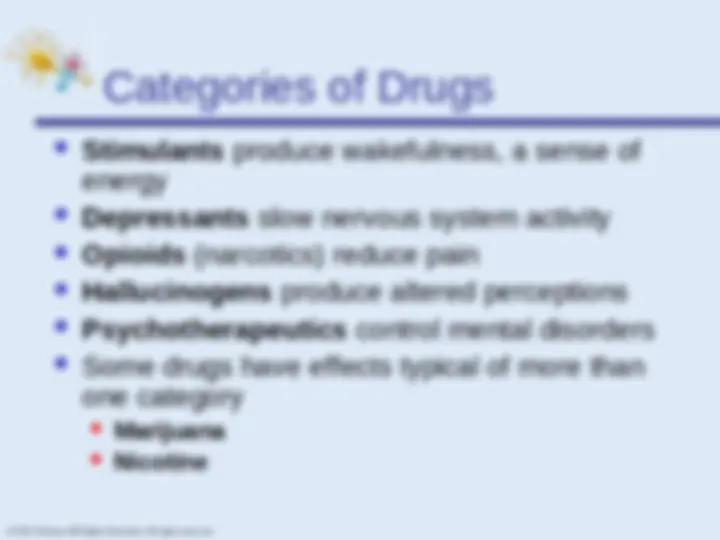
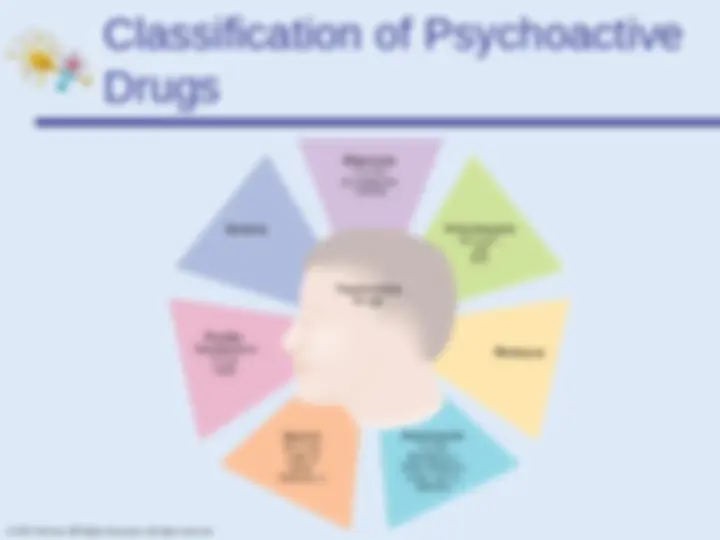
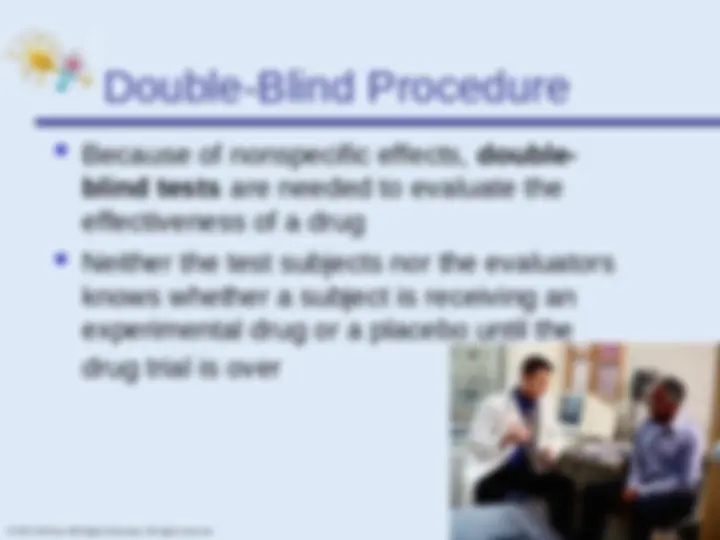
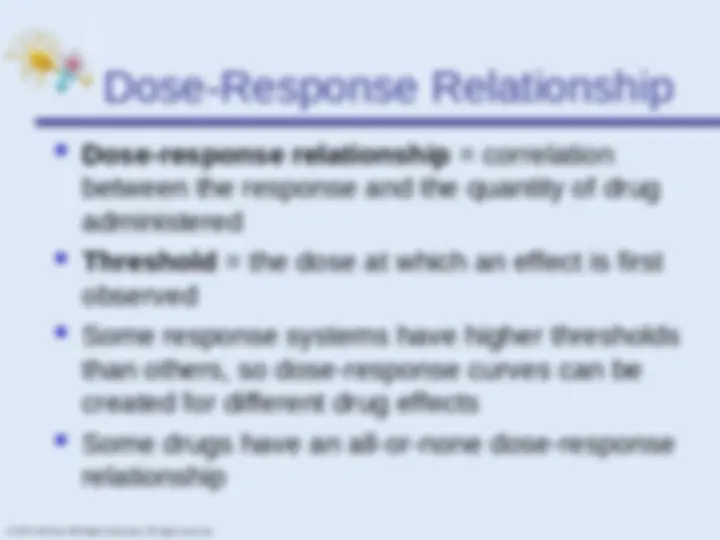
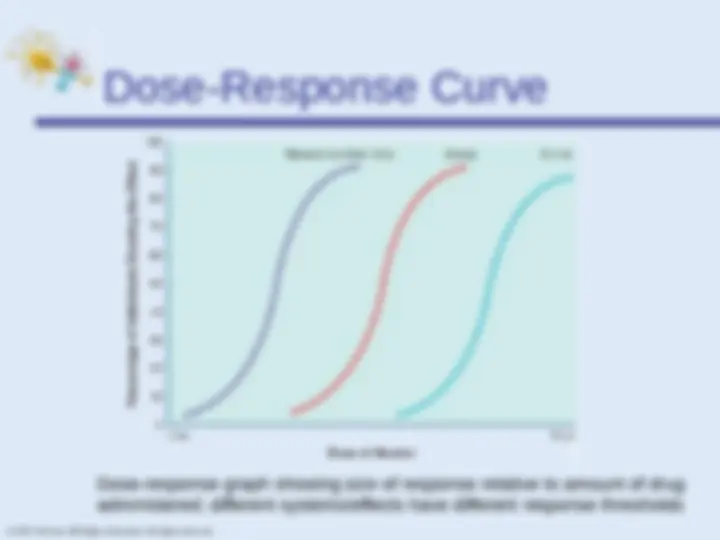
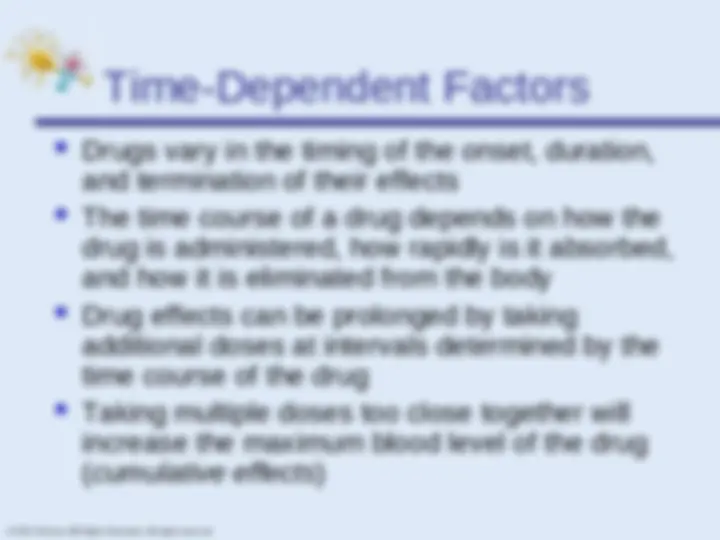
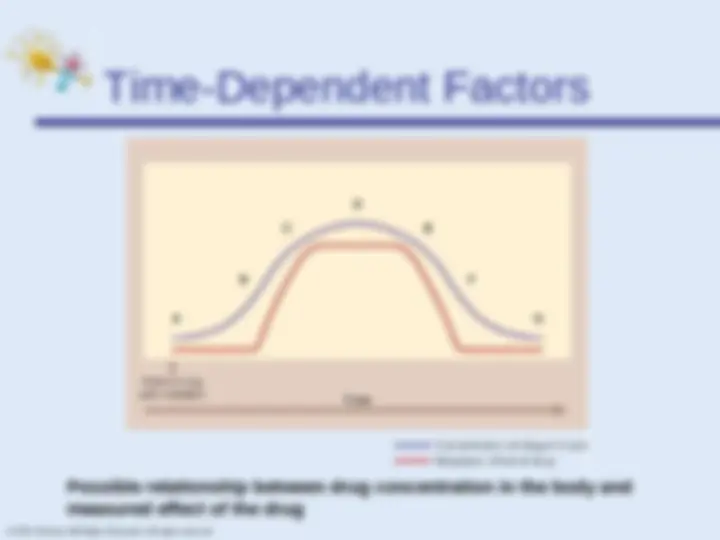
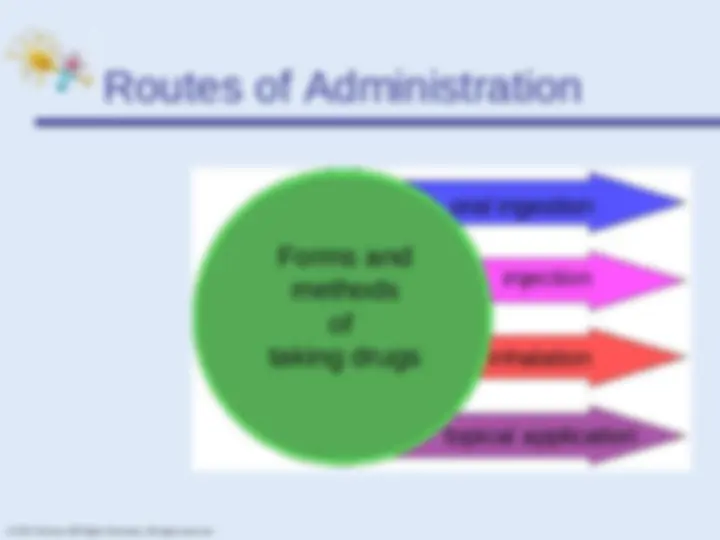
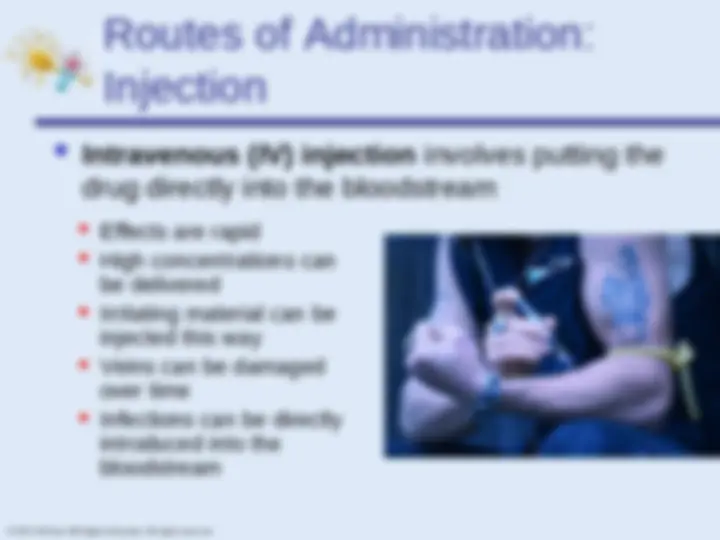
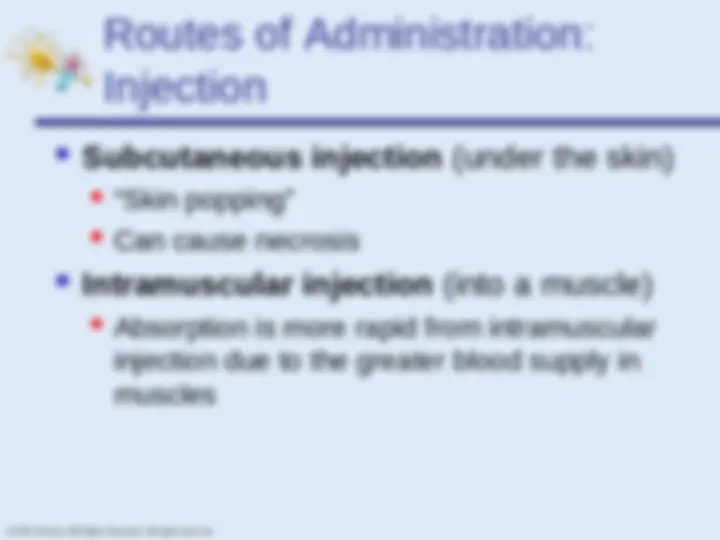
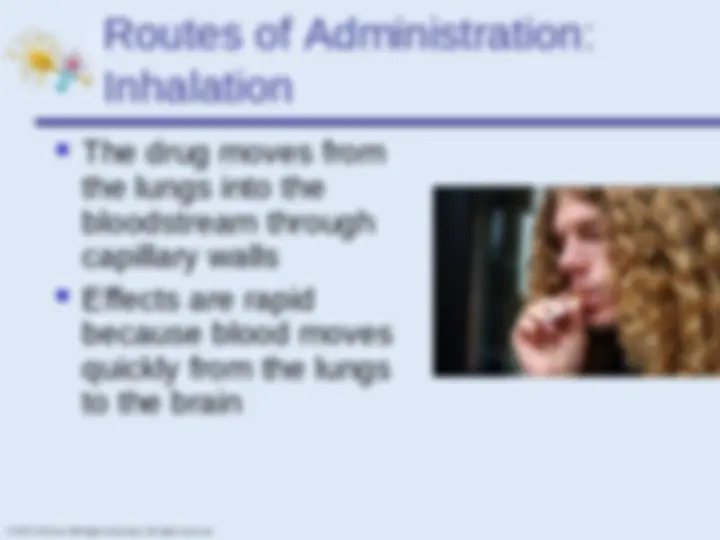

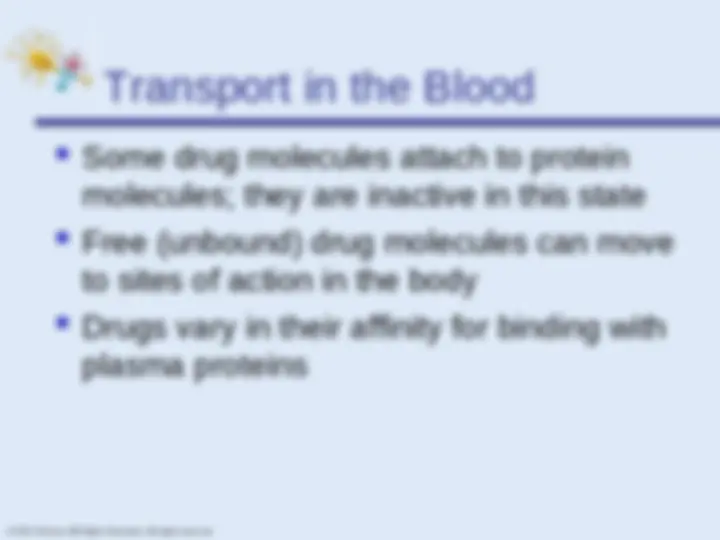
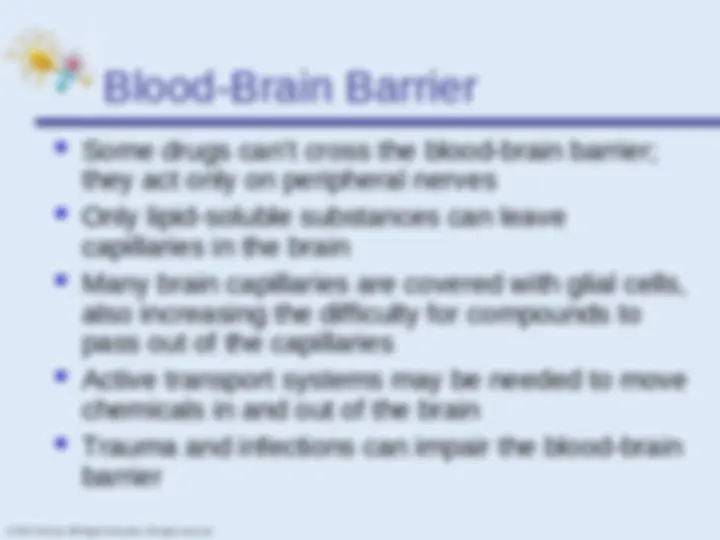
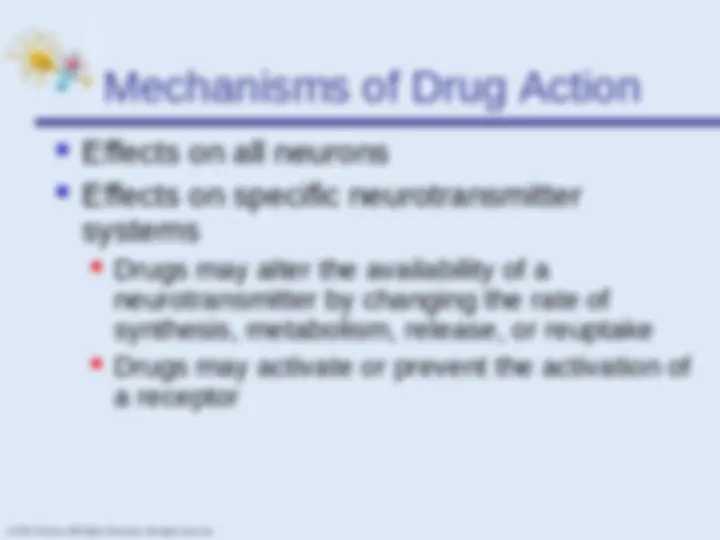
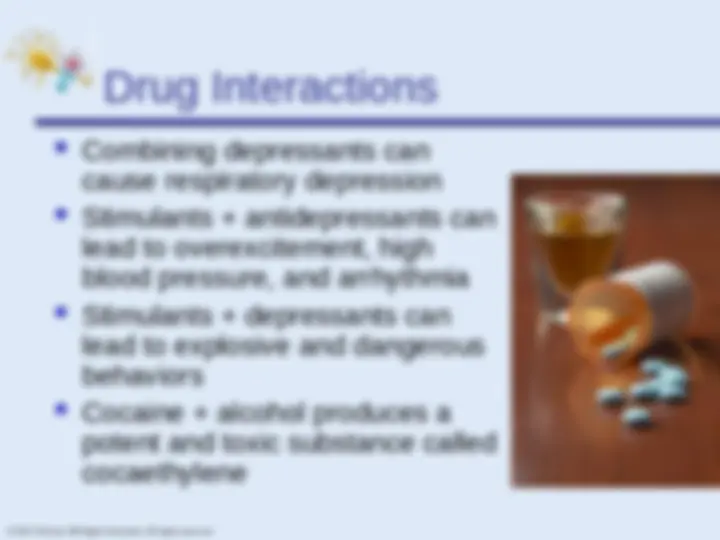
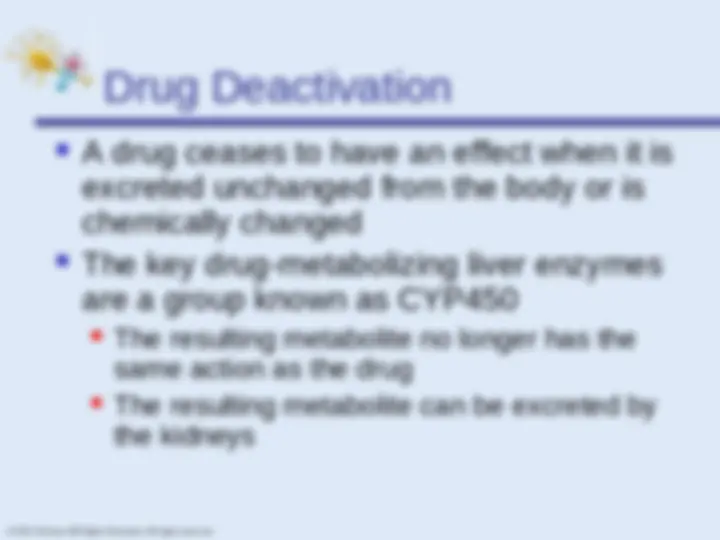
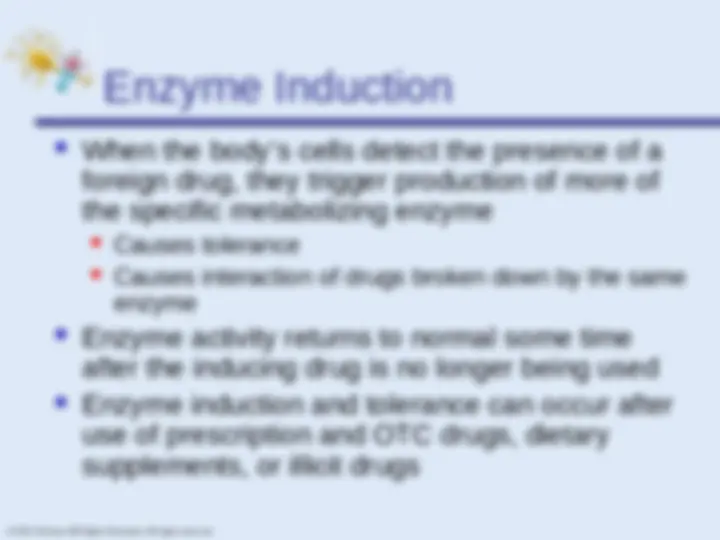
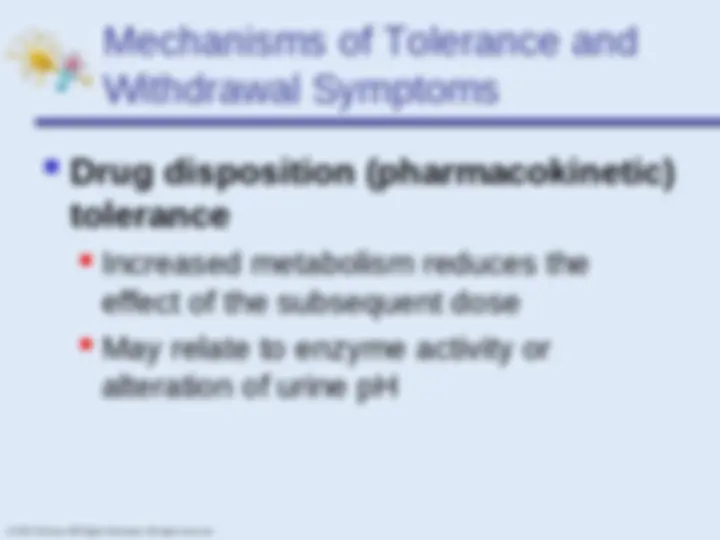
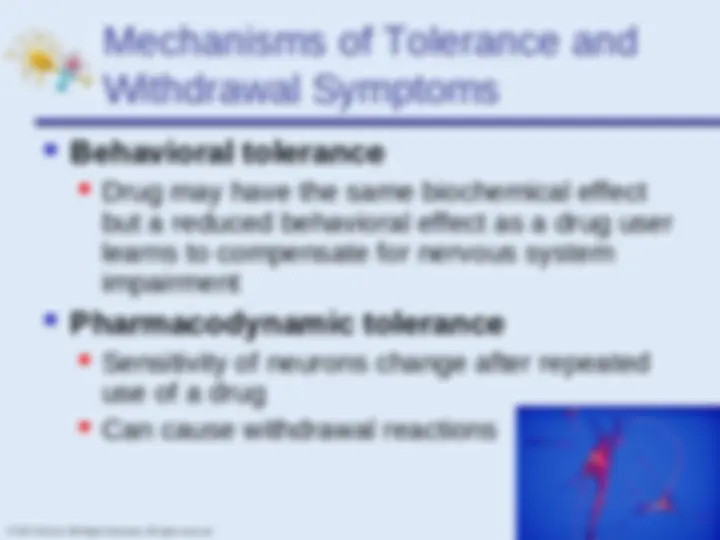
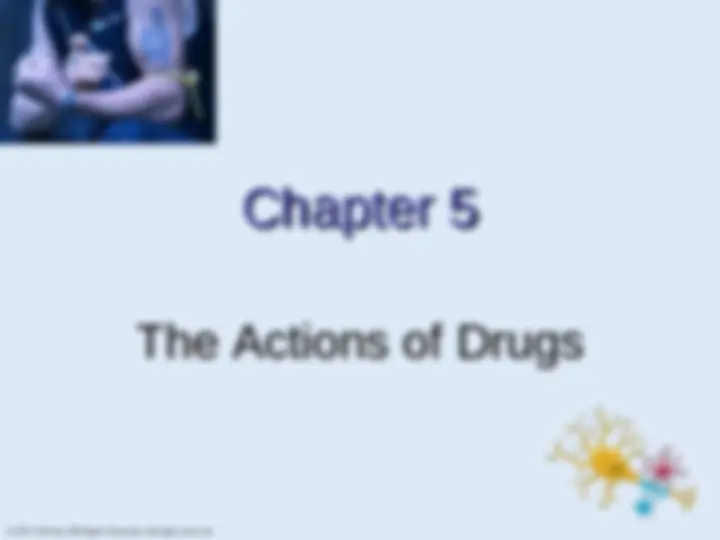


Study with the several resources on Docsity

Earn points by helping other students or get them with a premium plan


Prepare for your exams
Study with the several resources on Docsity

Earn points to download
Earn points by helping other students or get them with a premium plan
Community
Ask the community for help and clear up your study doubts
Discover the best universities in your country according to Docsity users
Free resources
Download our free guides on studying techniques, anxiety management strategies, and thesis advice from Docsity tutors
An in-depth analysis of the actions of drugs, including their names, classification, identification, effects, and administration methods. It covers topics such as the differences between chemical, generic, and brand names, categories of drugs, dose-response relationships, and routes of administration.
Typology: Study notes
1 / 30

This page cannot be seen from the preview
Don't miss anything!























Stimulants produce wakefulness, a sense of energy Depressants slow nervous system activity Opioids (narcotics) reduce pain Hallucinogens produce altered perceptions Psychotherapeutics control mental disorders Some drugs have effects typical of more than one category Marijuana Nicotine
Especially important in treating pain and psychological depression
Because of nonspecific effects, double- blind tests are needed to evaluate the effectiveness of a drug Neither the test subjects nor the evaluators knows whether a subject is receiving an experimental drug or a placebo until the drug trial is over
Dose-response graph showing size of response relative to amount of drug administered; different systems/effects have different response thresholds
Effective dose = the dose of a drug that produces a meaningful effect in some percentage of test subjects ED 50 refers to the effective dose for half the animal subjects in a drug test Lethal dose = the dose of a drug that has a lethal effect in some percentage of test subjects LD 50 refers to the lethal dose for half the animal subjects in a drug test Therapeutic index = LD 50 /ED 50 Always greater than one
Drugs vary in the timing of the onset, duration, and termination of their effects The time course of a drug depends on how the drug is administered, how rapidly is it absorbed, and how it is eliminated from the body Drug effects can be prolonged by taking additional doses at intervals determined by the time course of the drug Taking multiple doses too close together will increase the maximum blood level of the drug ( cumulative effects )
Possible relationship between drug concentration in the body and measured effect of the drug
Distribution of drugs through the body
Absorption from the gastrointestinal (GI) tract is a complicated process Drugs must withstand the digestive processes and pass through the cells lining the GI tract into the bloodstream (^) Drugs from the GI tract travel through veins first to the liver, where they may be metabolized
“Skin popping” Can cause necrosis
Absorption is more rapid from intramuscular injection due to the greater blood supply in muscles